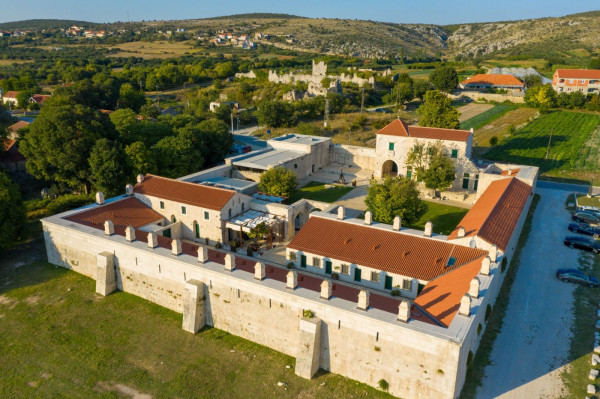Show all photos
Benedictine monastery - the old town of Vrana
The old town of Vrana has long kept the symbols of power, the insignia of the Croatian kingdom, which is why the coronation of Croatian-Hungarian King Koloman was held in Biograd, a nearby royal residence. Built in the 9th century as a Benedictine monastery dedicated to St. Gregory, the old town of Vrana controls large landed estates and a rich treasury containing a silver casket with the holy relics of St. Gregory, decorated with crosses, chalices and two golden crowns with precious stones.
On the occasion of the coronation in Solin in 1075-76, King Zvonimir handed over the building, together with all the property and wealth of the pope, so Vrana became the first permanent residence of the Vatican on the east coast of the Adriatic. One hundred years later in Vrana, the Knights Templar, with the Pope as the owner of the estate, strengthened their position by building strong walls and towers. As early as the 13th century, the Templar order disintegrated. Known as the "monastery of all monasteries" which held the order of St. John, the city retained a first-class political position for the rest of the Middle Ages.
In the 16th century, the Turkish Empire turned the building into a military fort for an army of 150 cavalry and 100 infantry, only for the Venetian army to thoroughly destroy its strong walls, during the liberation of Vrana in 1647, diminishing its strategic importance for all time.
The glorious past of the former center of ecclesiastical, political and military power is now overgrown with ruins, still waiting for the secrets of its many rulers to be revealed by archaeological research.
№1 of 2 places in Vrana
№357 of 2178 places in Croatia
№1 of 1 Ruins and archeological sites in Vrana
№10 of 101 Ruins and archeological sites in Croatia
Place Type
Location
Place Location
Put Ćokovca 7, 23212, Tkon






